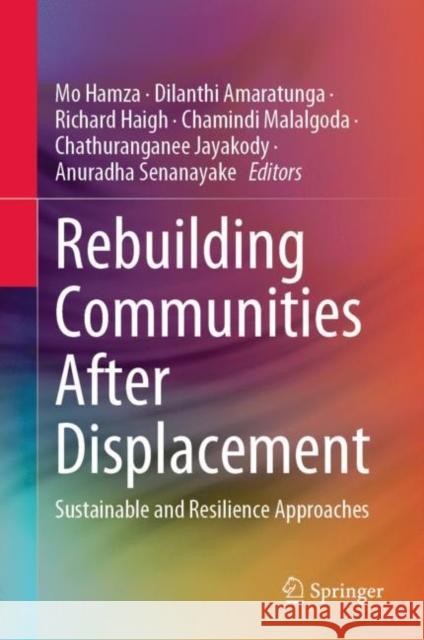Rebuilding Communities After Displacement: Sustainable and Resilience Approaches » książka
Rebuilding Communities After Displacement: Sustainable and Resilience Approaches
ISBN-13: 9783031214134 / Angielski / Twarda / 2023 / 412 str.
Rebuilding Communities After Displacement: Sustainable and Resilience Approaches
ISBN-13: 9783031214134 / Angielski / Twarda / 2023 / 412 str.
(netto: 499,55 VAT: 5%)
Najniższa cena z 30 dni: 501,19
ok. 22 dni roboczych
Bez gwarancji dostawy przed świętami
Darmowa dostawa!
This book presents a collection of double-blind peer reviewed papers under the scope of sustainable and resilient approaches for rebuilding displaced and host communities. Forced displacement is a major development challenge, not only a humanitarian concern. A surge in violent conflict, as well as increasing levels of disaster risk and environmental degradation driven by climate change, has forced people to leave or flee their homes – both internally displaced as well as refugees. The rate of forced displacement befalling in different countries all over the world today is phenomenal, with an increasingly higher rate of the population being affected on daily basis than ever. These displacement situations are becoming increasingly protracted, many lasting over 5 years. Therefore, there is a need to develop more sustainable and resilient approaches to rebuild these displaced communities ensuring the long-term satisfaction of communities and enhancing the social cohesion between the displaced and host communities. Accordingly, chapters are arranged around five main themes of rebuilding communities after displacement.Response management for displaced communitiesThe Built environment in resettlement planningGovernance of displacementSocio-Economic interventions for sustainable resettlement
This book presents a collection of double-blind peer reviewed papers under the scope of sustainable and resilient approaches for rebuilding displaced and host communities. Forced displacement is a major development challenge, not only a humanitarian concern. A surge in violent conflict, as well as increasing levels of disaster risk and environmental degradation driven by climate change, has forced people to leave or flee their homes – both internally displaced as well as refugees. The rate of forced displacement befalling in different countries all over the world today is phenomenal, with an increasingly higher rate of the population being affected on daily basis than ever. These displacement situations are becoming increasingly protracted, many lasting over 5 years. Therefore, there is a need to develop more sustainable and resilient approaches to rebuild these displaced communities ensuring the long-term satisfaction of communities and enhancing the social cohesion between the displaced and host communities. Accordingly, chapters are arranged around five main themes of rebuilding communities after displacement.
- Response management for displaced communities
- The Built environment in resettlement planning
- Governance of displacement
- Socio-Economic interventions for sustainable resettlement











